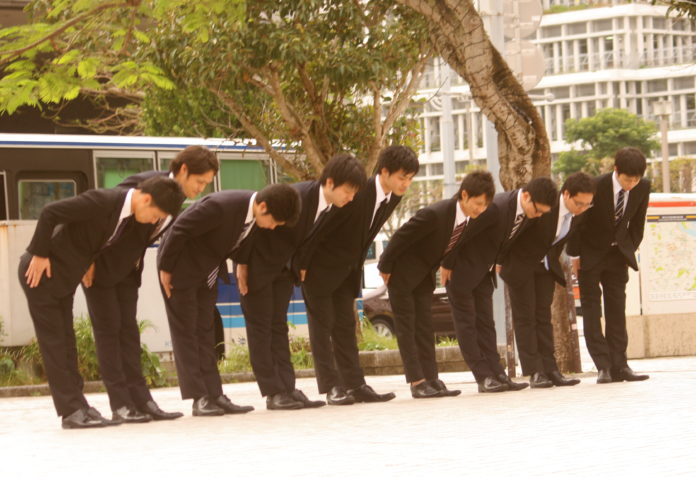In partnership with the Solidarity Fund.
When the coronavirus pandemic hit us forcing us into various stages of lockdown; one thing was made clear – social distancing. This included no hugging, no touchy feely vibes and definitely no kisses. Instead, we have been asked to greet each other by touching elbows. Touch is an important part of the human condition. Many of us have admitted we miss the feeling of hugs and close greetings. The spread of the coronavirus needs to be quelled. And we don’t need to be mamparas just for small kisses. Let’s take a look at various ways to greet without touching from around the world.
In Japan people greet each other by bowing.
A bow can be a small nod of the head to a deep bend at the waist. A deeper, longer bow indicates respect and a small nod with the head is casual and informal. Many east Asian countries have their own variations of bowing. One can bow from a few meters away, adequately fulfilling social distancing.
In many predominantly Muslim nations placing your right hand over your heart is also a common greeting. It is respectful, safe and perfect for someone who is not accustomed to your touch.
In Zimbabwe folks clap their hands to greet you. The first person claps once to greet first, the second person then follows by clapping twice. Mozambiqans clap their palms three times while saying “moni”; which translates to hello. I think it is pretty cool to be applauded when greeting someone.
Sign Language is another way to greet folks. It is also a responsible way to practice social distancing. At the same time, it is always a good thing to learn a new language to communicate better. A free resource for South African Sign Language can be perused here.
In India greeting is a phrase (Namaste) accompanied by a gesture (mudra). You will say Namaste as you press your palms together pointing upwards. This greeting has existed for thousands of years. It is also considered to be a sign of respect and gratitude.
Greeting is not just rooted in an old cultural practice. In 2020 we have had to move most interactions into a virtual environment. Some folks even greet by doing dance battles. One person would do a dance move to say hello, and that would be followed by the next person following up with another move. It is fun, involves no physical contact and you were greeted by your friend.
Greeting in a non physical way existed before the coronavirus hit. Folks wave, wink, gesture, raise an eyebrow and nod all the time as greetings. Touch is a fundamental sense. It is only natural to miss the closeness of a hug and kiss. It was our norm, and we have had to adopt a new normal. Learning about a new way to greet is also an introduction to a new culture. In the beginning of lockdown we were signing up for language courses on Duolingo and baking banana bread. Let’s keep the learning culture alive by learning new greetings and subsequently about people and their traditions.
Featured image via Wikicommons









